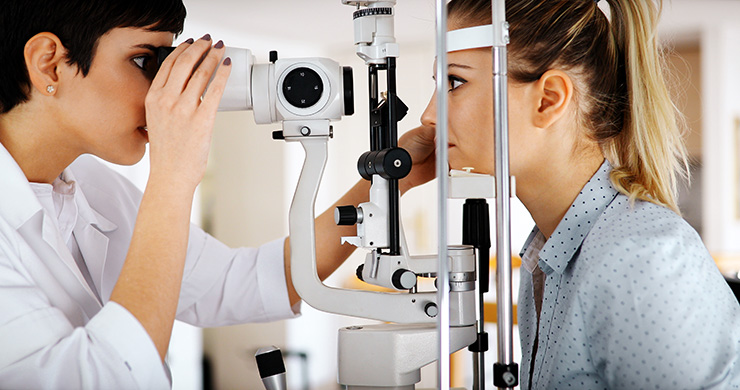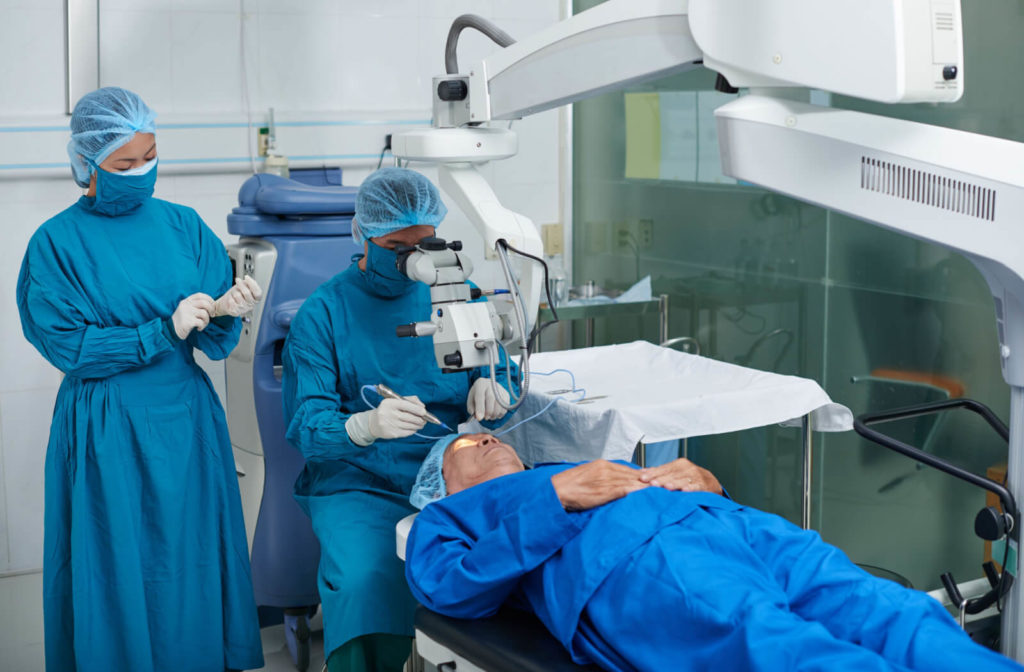Explore Advanced Services at Opticore Optometry for Eye Wellness
Explore Advanced Services at Opticore Optometry for Eye Wellness
Blog Article
Checking Out the most up to date Technological Advancements in Optometry and What They Mean for Eye Doctors
From the precision of Optical Coherence Tomography to the nuanced understandings supplied by AI-driven diagnostic tools, these innovations are establishing brand-new standards in patient analysis and therapy. As these advancements penetrate the technique, eye doctors are faced with the difficulty of accepting these tools to improve person results.
Developments in Diagnostic Devices
Progressing the area of optometry, innovations in analysis devices have changed the method eye treatment specialists analyze and identify aesthetic impairments and eye conditions. The previous decade has experienced considerable technological advancements, enabling more extensive and exact assessments. Optical Coherence Tomography (OCT), as an example, provides high-resolution cross-sectional pictures of the retina, enabling for the early discovery of conditions such as glaucoma and age-related macular deterioration. This non-invasive imaging technique has become important in modern optometric technique.
An additional key advancement is the introduction of innovative corneal topography systems, which map the surface curvature of the cornea with precision. These devices are particularly beneficial for suitable contact lenses and detecting corneal conditions. Digital retinal imaging has changed standard ophthalmoscopy, providing thorough, breathtaking views of the retina that facilitate complete aesthetic exams.
The growth of wavefront aberrometry has likewise been critical, making it possible for the analysis of refractive mistakes with unequaled precision (Eye Doctor). This innovation aids in personalizing rehabilitative lenses and enhancing medical end results for refractive surgical treatments. Collectively, these analysis developments equip optometrists to supply remarkable person care, ensuring very early treatment and tailored treatment strategies, ultimately enhancing visual health and wellness results
AI in Person Monitoring
Structure on the structure of sophisticated diagnostic devices, the consolidation of artificial knowledge (AI) in person management represents a transformative jump for optometry. AI systems are significantly employed to boost performance, precision, and customization in person care. By assessing substantial amounts of information, AI can determine patterns and anticipate possible ocular problems, making it possible for optometrists to tailor interventions a lot more properly. This ability is critical in taking care of chronic eye illness such as glaucoma and diabetic retinopathy, where early discovery and continuous surveillance are vital.
Moreover, AI-driven systems assist in structured client communications and management procedures. Automated organizing, online appointments, and individualized follow-up plans not just enhance client complete satisfaction however additionally maximize time administration for professionals. These systems can triage people based upon the seriousness of their conditions, guaranteeing that those in vital demand get timely attention.
In addition, AI boosts decision-making by providing eye doctors with evidence-based suggestions and treatment pathways. By incorporating data from digital wellness records, AI tools supply insights that educate scientific decisions, lowering the risk of errors and enhancing individual end results. As AI continues to advance, its duty in person management will likely broaden, improving the landscape of optometric care.
Developments in Retinal Imaging
In the world of optometry, retinal imaging has witnessed exceptional technical advancements that are boosting analysis capacities and patient care. Developments such as Optical Coherence Tomography (OCT) and fundus digital photography have changed exactly how eye doctors examine the retina and imagine.
Enhanced imaging modalities like OCT angiography are further refining diagnostic accuracy. This non-invasive technique maps blood flow in the retina, using critical understandings right into vascular wellness without the requirement for dye injections. Furthermore, flexible optics innovation is being incorporated right into retinal imaging systems to correct eye aberrations, providing unprecedented photo quality. Such innovations facilitate the recognition of minute retinal adjustments that can represent illness development.
In addition, improvements in man-made knowledge are boosting retinal imaging by allowing computerized evaluation of large datasets. These systems assist eye doctors in determining patterns a measure of pathology, consequently boosting analysis precision and efficiency. Jointly, these technologies are transforming retinal imaging into a keystone of modern eye care, enhancing end results and broadening healing possibilities.
Teleoptometry's Expanding Function
Teleoptometry is progressively ending up being an essential part of eye treatment, driven by improvements in data and analysis tools. As optometry accepts electronic change, teleoptometry assists in remote consultations, allowing optometrists to extend their solutions past typical limits. This is particularly useful link helpful in rural and underserved areas where accessibility to specialized eye care is commonly restricted. By leveraging high-resolution video conferencing and progressed retinal imaging, eye doctors can carry out extensive eye exams from afar, ensuring prompt diagnosis and therapy.
The assimilation of artificial knowledge (AI) further enhances teleoptometry, making it possible for the analysis of aesthetic data and helping in the detection of ocular conditions such as glaucoma and diabetic retinopathy. AI-powered algorithms can quickly translate complicated imaging data, giving optometrists with beneficial insights that bolster clinical decision-making.
Additionally, teleoptometry sustains continuity of treatment with seamless assimilation with digital health and wellness documents (EHRs), permitting optometrists to keep detailed person histories. This makes sure that patients Go Here obtain personalized and consistent treatment even when consulting with different specialists.
In spite of these benefits, obstacles continue to be, consisting of making certain information security and taking care of individual assumptions. Teleoptometry represents a substantial stride towards even more easily accessible, efficient, and patient-centered eye treatment. As modern technology evolves, its function is positioned to increase better.

Future Trends in Eye Treatment
A myriad of cutting-edge trends is established to improve the future of eye care, driven by technical innovations and the evolving requirements of patients. One significant pattern is the assimilation of expert system (AI) in diagnostics, which promises to improve the accuracy and efficiency of eye evaluations. AI formulas can evaluate vast amounts of data from retinal pictures, possibly spotting problems like diabetic person retinopathy and glaucoma earlier than standard approaches.
Additionally, customized medication is obtaining traction in optometry, with genetic testing notifying tailored therapy plans. This approach aims to maximize patient end results by tailoring treatments to individual hereditary profiles. Wearable innovation, such as clever call lenses, is likewise on the perspective, offering real-time tracking of intraocular stress or glucose levels, hence supplying continual insights into eye and systemic wellness.
The fostering of increased reality (AR) and digital truth (VR) in training and individual education and learning is an additional arising fad. These modern technologies use immersive experiences that can enhance understanding and abilities both for clients and click here to find out more eye doctors. As these fads develop, eye doctors have to stay abreast of technological innovations to offer sophisticated care, making sure better individual outcomes and fulfillment in the dynamic landscape of eye treatment.
Final Thought

Collectively, these diagnostic developments empower optometrists to deliver premium person care, ensuring early intervention and tailored therapy techniques, ultimately improving aesthetic health and wellness outcomes.

As these modern technologies proceed to evolve, eye doctors need to adapt and incorporate them right into method, inevitably optimizing operations efficiency and boosting the standard of eye treatment provided to people.
Report this page